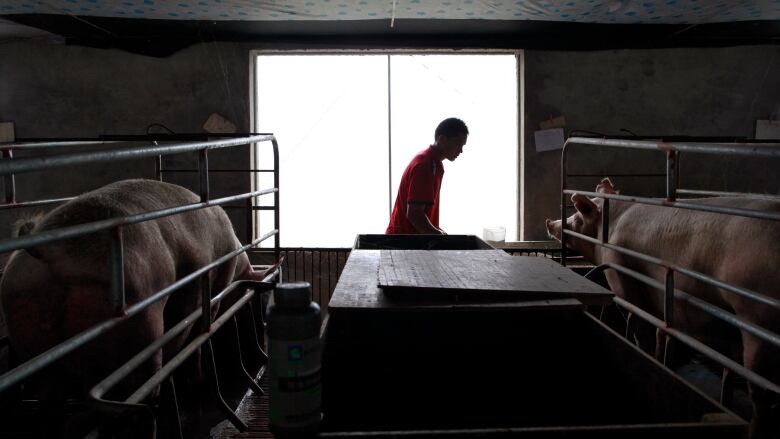China lays out $3B in tariffs on U.S. products like pork, fruit and nuts
China responds to trade and aluminum tariffs, but more could be coming

China slapped import duties of up to $3 billion US on American pork, metal, fruit, nuts, wine, ginseng and dozens more products on Sunday, the latest salvo in an escalating trade war between the two countries.
China laid out the tariffs on 128 different items on Sunday evening, which the government of President XiJinpingsaid is in response to anti-competitive tariffs the U.S. recently enacted on Chinese steel and aluminum.
Beijing's move will put a 25 per cent levy on imported American pork,for which China is the No. 3 American export market.
Virtually all types of pork products will be included, including fresh and chilled bone-in pork forelegs and hind legs, chilled whole and half hog heads, pork liver, chopped pork, other fresh and chilled pork.
There is also a 25 per cent tariff on recycled scrap aluminum, but the U.S. does not currently export a large amount of that productto China.
Other agricultural products including apples, coconuts, bananas, pineapple, pomegranates, mangos, grapefruit, grapes, watermelon, cherries, strawberries and dried apricots will all see a 15 per cent levy.
Nuts such as brazil nuts, cashews, almonds, walnuts, macadamia nuts andpine nuts will see the same, as will American-made sparkling wine and ginseng.
Beijing seems to have tailored its list of products to take direct aim at agriculture-producing states which overwhelmingly voted for Donald Trump in the 2016 election.
The U.S. exported $20 billion worth of farm products to China last year, including $1.1 billion worth of pork.
The tariffs "signal a most unwelcome development, which is that countries are becoming protectionist," said economistTaimurBaigofDBSGroup. But in terms of overall trade between the two economies, they are "not very substantial."
China imports some $150 billion worth of U.S. goods and services every year, a figure which is three times smaller than what the U.S. buys from China. While China's response to trade tensions has so far been small and targeted, many experts say escalation feels possible.
The next opportunity for such an escalation could come soon, as Sunday's measures aren't evenin response to the White House's latest moves. In March, the White House took aim at unfair practices concerning IT services in China under section 301 of the U.S. trade act. Prior to that, they announcedthe earlier steel and aluminum moves, which were under section 232 of the same act.
"It is important to note that the Chinese response to 301 is still to be determined," analyst Chris Krueger with Washington-based research firm Cowen said.
The so-called 301 tariffs, which have yet to be finalized, are designed to take a $50 billion bite into the Chinese economy, punishment in kind for the amount that the administration says the foreign takeover and IT rules have cost U.S. firms in China.
"If 232 is an indicator," Krueger said. "It is probably fairly reciprocal."
A big part of the problem is the unpredictability of the person pulling the strings: U.S. President Donald Trump.
"It is impossible to have any conviction about what is going to happen next on trade mainly because so much of this is up to Trump," Krueger added.
The Trump administration is scheduled to compile its final list of tariff goods by Friday. "This will likely trigger a second round of countervailing penalties from China," Cambridge Global Payments directorKarlSchamottasaid, "and shortly after last night's statement, several party-controlled media outlets said that a second round of penalties could include strategically vital product categories like soybeans and aircraft."
That means China's latest move is likely to be met with a tit-for-tat reply from Washington, which will then likely be met by even more tariffs from Beijing.
"China has already prepared for the worst," said Liu Yuanchun, executive dean of the National Academy of Development Strategy at Renmin University in Beijing. "The two sides, therefore, should sit down and negotiate."
The volleys of threats are "a process of game-playing to test each other's bottom lines," said Tu Xinquan, a trade expert at the University of International Business and Economics in Beijing.
"We are curious about what the U.S. side really wants," he said, "and wonder whether the United States can tolerate the consequences."
With files from The Associated Press












_(720p).jpg)


 OFFICIAL HD MUSIC VIDEO.jpg)
.jpg)



























































































